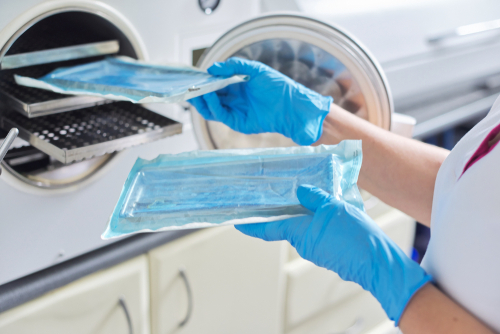The coronavirus pandemic has led many people to start asking questions they might not have considered before, such as, “How are dental instruments sterilized?”
It should come as a comfort that the dental profession is accustomed to maintaining high levels of infection control and sterilization, even in normal times. Penn Dental Family Practice follows the most stringent sanitation standards as set out by the U.S. Centers for Disease Control and Prevention (CDC). This includes sanitation best practices for general dentistry, as well as official guidelines to prevent the spread of coronavirus.
Proper sterilization practices in dentistry protect both patients and dental professionals. They prevent bacteria from growing on instruments and surfaces throughout the dental practice. They also ensure that germs cannot be transmitted from one person to another.
The concept of “clean” means something quite different to the dentist than it does to the general public. For a dental practice, being clean means reducing the number of microorganisms to avoid transmission from the environment or dental personnel. The next level up is sterile, which means removing ALL microorganisms.
That’s why dentists and dental assistants take many precautions throughout a single visit. The next time you come to see us, notice the level of care with which everything is handled. Does the dental assistant wipe down all surface areas that you come into contact with? Do they use disposable materials and discard them promptly in biohazard bins? Does everyone wash their hands between patients?
All these precautions are common practice at Penn Dental Family Practice. We do all these things habitually, in accordance with the standards of our profession. You may be surprised to learn about everything that’s going on behind the scenes of your dentist appointment:
How Are Dental Instruments Sterilized?
We follow these steps to ensure a safe and sterile environment for all our patients:
1. Self-protection
We use personal protective equipment (PPE), including eyewear, face masks, and gloves to prevent any exposure to germs from each patient. This also keeps patients safe, by preventing the passing of germs from one patient to another. With COVID-19 as a new, constant concern, we take special care to replace our PPE between patients.
2. Cleaning instruments
 Sterilization requires a careful, multi-step process that is more detailed and complex than we can fully explain here. Before the sterilization of dental instruments occurs, the instruments are thoroughly cleaned. This means removing any visible debris from the device through either scrubbing with a surfactant, detergent, and water, or using an automated process with chemical agents. After cleaning, instruments are rinsed with water to remove any chemical or detergent residue. Before final sterilization, instruments are handled with the utmost care to avoid any contamination.
Sterilization requires a careful, multi-step process that is more detailed and complex than we can fully explain here. Before the sterilization of dental instruments occurs, the instruments are thoroughly cleaned. This means removing any visible debris from the device through either scrubbing with a surfactant, detergent, and water, or using an automated process with chemical agents. After cleaning, instruments are rinsed with water to remove any chemical or detergent residue. Before final sterilization, instruments are handled with the utmost care to avoid any contamination.
The CDC recommends several ways to clean instruments:
- Ultrasonic cleaning
Sound waves pass through a solution to shake any debris loose from the instrument.
- Automated instrument washers
These washers save time by eliminating the need to manually rinse each instrument.
- Manual scrubbing
Instruments are soaked in a detergent or enzymatic cleaner if they cannot be cleaned immediately. Manual cleaning must be performed in a highly controlled environment.
3. Sterilization
There are three types of sterilizers that are commonly used in dental offices:
- Steam sterilization (autoclave)
- Dry heat sterilization
- Unsaturated chemical vapor sterilization
Steam sterilization (autoclaves) puts each item into direct steam contact with a specified temperature, pressure, and time period to kill microorganisms. Autoclaves reach approximately 250-273 degrees Fahrenheit. Sterilization times may range from four to 30 minutes depending on whether instruments are wrapped or unwrapped. The drying cycle may take between 25 and 40 minutes.
Dry heat sterilizers use either static or forced air. In the static air option, heating causes hot air to rise inside an oven-type chamber using natural convection. With forced air, heated air is circulated throughout the chamber at high speeds. The combination of high heat (300-375 degrees Fahrenheit) and extended time (12-150 minutes) achieve sterilization.
Unsaturated chemical vapor sterilizers combine alcohol, formaldehyde, acetone, ketone, and water to create a vapor that sterilizes instruments. This chemical vapor is applied at a high pressure, hot temperature (270 degrees Fahrenheit) and an extended time (20-40 minutes).
At Penn Dental Family Practice, all sterilization is carefully monitored using process parameters to ensure safety and effectiveness.
Infection Control at Penn Dental Family Practice
The sterilization practices mentioned above provide only a brief overview of all the considerations and activities involved in maintaining dental safety. The dentists at Penn Dental Family Practice are leading experts in the industry, many of whom teach the next generation of dentists at the prestigious University of Pennsylvania School of Dental Medicine. We are at the forefront of sanitation best practices and are constantly setting an example for other dental providers. Our primary responsibility is to ensure your safety and well-being, so you can rest assured knowing that you won’t face sanitary risk when you walk through our doors.
If you want the peace of mind that comes with receiving care from a top-notch dental provider, schedule your upcoming appointment at PDFP by calling 215-898-7337.


